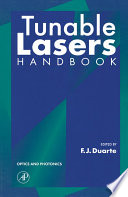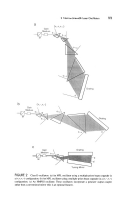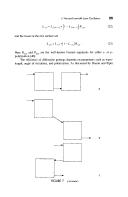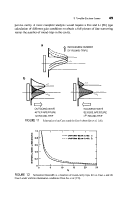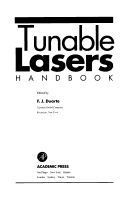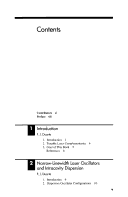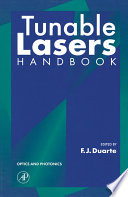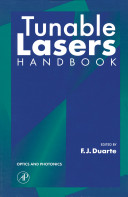Tunable Lasers HandbookMany laser applications depend on the ability of a particular laser to be frequency tunable. Among the many different types of frequency tunable lasers are: dye lasers, excimer lasers, and semiconductor lasers. Thisbook gives active researchers and engineers the practical information they need to choose an appropriate tunable laser for their particular applications.
|
Avis des internautes - Rédiger un commentaire
Aucun commentaire n'a été trouvé aux emplacements habituels.
Table des matières
| 1 | |
| 9 | |
| 33 | |
Chapter 4 CO2 Isotope Lasers and Their Applications in Tunable Laser Spectroscopy | 63 |
Chapter 5 Dye Lasers | 167 |
Chapter 6 Transition Metal SolidState Lasers | 219 |
Chapter 7 Optical Parametric Oscillators | 293 |
Chapter 8 Tunable ExternalCavity Semiconductor Lasers | 349 |
Chapter 9 Tunable FreeElectron Lasers | 443 |
| 471 | |
Optics and Photonics | 477 |
Autres éditions - Tout afficher
Expressions et termes fréquents
absorption achieved active addition amplifier angle Appl approximately atoms band bandwidth beam birefringence Brewster's angle cavity coating coefficients configuration continued coupling crystal depends described device dispersion Duarte dye lasers effects efficiency Electron emission energy etalon excitation facet field FIGURE filter frequency function gain given grating higher IEEE increased interaction intracavity laser diode laser level laser material lasing length Lett lifetime limited linewidth loss lower manifold measured mirror mode molecules nonlinear crystal obtained occur operation optical optical parametric oscillator oscillator output parametric peak performance phase photon Phys polarization prism pulse pump Quantum Quantum Electron radiation range referred reflectance region relatively resonant respectively shown signal single slope sources spectral stabilization TABLE temperature threshold tion transitions tunable tuning upper laser usually wave wavelength
Fréquemment cités
Page 7 - Walling, OG Peterson, HP Jenssen, RC Morris, and EW O'Dell, IEEE J. Quantum Electron.

